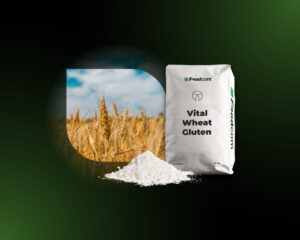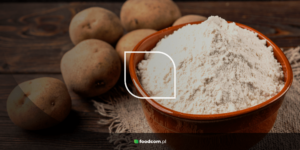- Soy Protein Isolate prices are increasing due to growing demand and supply chain issues, leading to higher transportation costs.
- The global honey market is set to reach USD 8.45 billion by 2024, with technological innovations enhancing production efficiency.
- A strike by soybean oil workers in Argentina has halted processing activities amid rising inflation.
Welcome to our plant-based newsletter!
Explore the dynamic shifts in key markets this week. Learn about the rising demand and supply challenges in the Xanthan Gum market, the growth and obstacles facing the global Honey industry, and the increasing prices of Soy Protein Isolate due to supply chain issues. Stay informed on the factors driving these markets and what to expect moving forward.
Let’s take a look at what else is happening on the market!
Products of the Week
Xanthan Gum
The Xanthan Gum market is experiencing significant fluctuations due to supply chain disruptions and global economic factors. Prices have risen recently due to strong global demand, particularly from the oil drilling sector, and ongoing trade disruptions. Despite challenges such as port congestion and rising freight costs, supply remains stable, supported by increased activity at the Port of Shanghai, which is critical to maintaining supply chains. The market outlook is cautiously optimistic, with further growth dependent on economic indicators, export trends and political support for the manufacturing sector.
Honey
The global Honey market is estimated to reach USD 8.45 billion in 2024 and is expected to grow further, driven by consumer demand for natural sweeteners. Key producers include China, Turkey, Iran, Ukraine, Argentina and Poland. While the US, Germany and Japan are the largest importers. In Europe, locally produced honey is valued much more than imports from outside the continent. The industry faces challenges such as climate change, which is affecting bee populations, and widespread honey adulteration, with up to 30% of honey at risk. However, technological advances such as smart hives and automated extraction are increasing the efficiency of production. There is also a growing demand for premium and specialty honeys, such as Manuka.
Soy Protein Isolate
Global Soy Protein Isolate (SPI) prices are expected to rise due to increased consumer demand, supply chain issues and limited market availability. Persistent equipment shortages and port congestion in Asia are exacerbating supply shortages. This reduced shipping capacity combined with the increasing demand for transportation services in the upcoming peak season is likely to drive up transportation costs significantly. In addition, rising ocean freight rates in the US market corridors, driven by growing global container demand, will increase the cost of importing SPI from Asia, so the higher costs are likely to be passed on to consumers.
What else?
Argentina soybean oil workers strike
Workers at Argentina’s soybean oil plants went on strike on Tuesday over wage disputes, bringing operations at a key global processing center to a standstill. The strike, led by SOEA and the Oilseeds Industry Association, follows failed negotiations with industry representatives, including CIARA. The walkout comes amid a severe inflation crisis in Argentina, where prices have risen by 80% in the first half of the year. CIARA head Gustavo Idigoras confirmed that soy processing has come to a standstill across the country.
Sharp decline in wheat cultivation in Rio Grande do Sul
In Rio Grande do Sul, Brazil’s largest wheat-producing state, wheat cultivation has declined sharply. Due to cultivation problems, low prices and high costs, farmers in Ijui have reduced their winter wheat acreage by up to 30% and planted more rapeseed instead. Heavy rains in early June led to germination problems and erosion, which washed away seeds and fertilizer. Some farmers replanted, while others avoided additional costs. The July Conab report estimates that wheat is grown on 1.34 million hectares in Rio Grande do Sul, a decrease of 10.6%. The average yield is expected to be 3,120 kg/ha, an increase of 61% compared to the areas affected by the drought. Wheat production is expected to reach 4.18 million tons in 2024, an increase of 44.5 %.
Decline in Ukrainian wheat prices amidst global market fluctuations
Ukrainian wheat prices continue to fall due to lower export demand and competition from Russia. By 2 August, Ukraine had harvested 19.441 million tons of wheat, meeting the USDA’s forecast. Wheat exports from Ukraine (August 1-5) amounted to 79,000 tons, below the 156,000 tons of the previous year. Globally, wheat futures for September rose slightly due to a forecast lower wheat harvest in the EU. The EU’s wheat export season fell by 39% compared to the previous year. Russia exported 3.6 million tons of wheat in July, compared to 5 million tons in the previous year.
![The next big thing: pea protein and fava are revolutionising the market! [62nd Foodcom PLANT-BASED Newsletter] The next big thing: pea protein and fava are revolutionising the market! [62nd Foodcom PLANT-BASED Newsletter]](https://foodcom.pl/wp-content/uploads/2024/06/Foodcom_SA_Plant-Based_Newsletter_3-1520x760.jpg)






